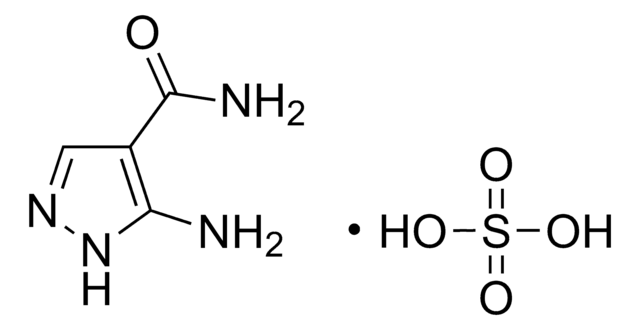MABF917
Przeciwciało anty-CRACC, klon 4G2
clone 4G2, from rat
Synonim(y):
SLAM family member 7, CD2-like receptor-activating cytotoxic cells, CRACC, Leukocyte cell-surface antigen, Novel Ly9, CD319
About This Item
Polecane produkty
pochodzenie biologiczne
rat
Poziom jakości
forma przeciwciała
purified antibody
rodzaj przeciwciała
primary antibodies
klon
4G2, monoclonal
reaktywność gatunkowa
mouse
metody
flow cytometry: suitable
immunoprecipitation (IP): suitable
izotyp
IgG1κ
numer dostępu NCBI
numer dostępu UniProt
docelowa modyfikacja potranslacyjna
unmodified
informacje o genach
mouse ... Slamf7 (75345)
Powiązane kategorie
Opis ogólny
Specyficzność
Immunogen
Zastosowanie
Analiza cytometrii przepływowej: Reprezentatywna partia wykryła ekspresję CRACC na powierzchni wielu typów mysich komórek układu odpornościowego, w tym komórek NK, komórek NKT, komórek B, DC, makrofagów i aktywowanych limfocytów T (Cruz-Munoz, M.E., et al. (2009). Nat. Immunol. 10(3):297-305).
Wpływa na funkcję: Reprezentatywna partia, w połączeniu z króliczym anty-szczurzym IgG, sieciowała powierzchnię komórek CRACC i indukowała podobną fosforylację CRACC w aktywowanych IL-2 komórkach NK od myszy typu dzikiego, myszy z niedoborem SAP lub myszy EAT-2-ERT-double knock (DKO) (Cruz-Munoz, M.E., et al. (2009). Nat. Immunol. 10(3):297-305).
Analiza immunoprecypitacji: Reprezentatywna partia, w połączeniu z króliczym anty-szczurzym IgG i białkiem A, immunoprecypitowała CRACC z lizatów mysich komórek NK aktywowanych IL-2 (Cruz-Munoz, M.E., et al. (2009). Nat. Immunol. 10(3):297-305).
Inflammation & Immunology
Immunological Signaling
Jakość
Flow Cytometry Analysis: 0.1 µg of this antibody detected CRACC-positive mouse splenocytes.
Opis wartości docelowych
Postać fizyczna
Przechowywanie i stabilność
Zalecenia dotyczące postępowania: Po otrzymaniu i przed zdjęciem nasadki odwirować fiolkę i delikatnie wymieszać roztwór. Rozdzielić do probówek do mikrowirówki i przechowywać w temperaturze -20°C. Unikać powtarzających się cykli zamrażania/rozmrażania, które mogą uszkodzić IgG i wpłynąć na działanie produktu.
Inne uwagi
Oświadczenie o zrzeczeniu się odpowiedzialności
Nie możesz znaleźć właściwego produktu?
Wypróbuj nasz Narzędzie selektora produktów.
Kod klasy składowania
12 - Non Combustible Liquids
Klasa zagrożenia wodnego (WGK)
WGK 2
Temperatura zapłonu (°F)
Not applicable
Temperatura zapłonu (°C)
Not applicable
Certyfikaty analizy (CoA)
Poszukaj Certyfikaty analizy (CoA), wpisując numer partii/serii produktów. Numery serii i partii można znaleźć na etykiecie produktu po słowach „seria” lub „partia”.
Masz już ten produkt?
Dokumenty związane z niedawno zakupionymi produktami zostały zamieszczone w Bibliotece dokumentów.
Nasz zespół naukowców ma doświadczenie we wszystkich obszarach badań, w tym w naukach przyrodniczych, materiałoznawstwie, syntezie chemicznej, chromatografii, analityce i wielu innych dziedzinach.
Skontaktuj się z zespołem ds. pomocy technicznej![(2S)-6-Amino-2-{[(9H-fluoren-9-ylmethoxy)carbonyl]amino}hexanoic acid](/deepweb/assets/sigmaaldrich/product/structures/208/694/eddf6778-ca06-4285-b640-a693f1ce3eda/640/eddf6778-ca06-4285-b640-a693f1ce3eda.png)
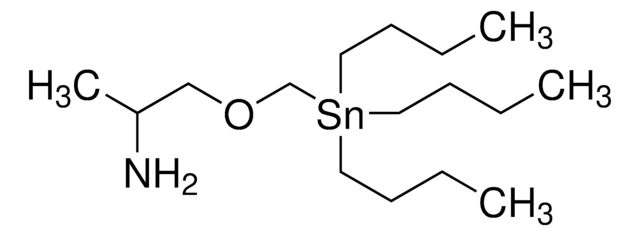
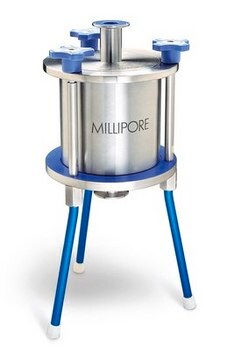
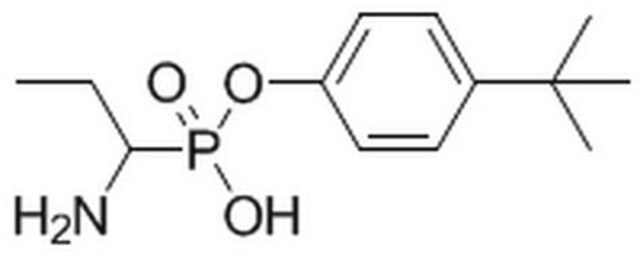

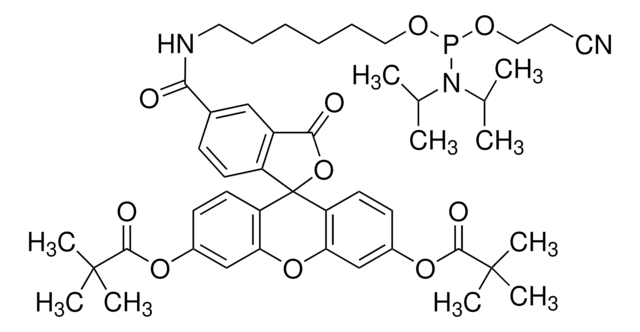
![1,3,8-triazaspiro[4.5]decane-2,4-dione AldrichCPR](/deepweb/assets/sigmaaldrich/product/structures/154/012/bf434fcc-95bc-4f79-8d16-67d62a49013a/640/bf434fcc-95bc-4f79-8d16-67d62a49013a.png)


